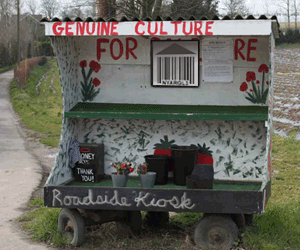Opt-in Marketing and why Museums can be in a Position to Leverage it
Users are more in control today over what advertising they wish to view than ever before. Indeed, that is a hallmark of the Gen Y’s. While older generations have grow up accustom to the continual exposure of advertiser’s messages in print radio and TV, technology and trend has allowed consumers to increasingly select what advertising they wish to be exposed to or to simply skip it altogether. Tivo allows the viewer to bypass TV commercials, Facebook lets the user Thumbs up or Thumbs down ads, consumers can unsubscribe to your e-newsletters, unfriend you on Facebook, unfollow you on Twitter… and to make matters even more complicated consumers are creating their own content.
Content is King
To combat this, advertising agencies are now switching to a more marketing-focused model that depends upon viral content. Rebecca Lieb, former Editor-in-Chief for ClickZ talks about three criteria for creating content that should:
- Educate and inform the audience
- Amuse, engage, entertain
- Create a story that consumers can spread (viral marketing)
The key is how do you make your content so engaging that consumers voluntary go online and subscribe, or go even farther and become advocates and invite or send your content to their friends. Many think of video when they think “Goin’ Viral” but the same applies to e-newsletters and blog posts as well, which are increasing the marketing tools of choice for these cash strapped times. Lieb says that brands are now dedicating their budget not to media buying, but to creative and spokespeople to find ways to engage consumers.
I would like to point out that Lieb said that they are not cutting their budget, but rather rededicating it. Engaging consumers comes at a price. Anyone who still thinks that web is just cheap content is fooling themselves.
Lieb also states, advertisers are becoming “storytellersâ€. If you want to sell a product, you need a story. Cranking out talking head videos, sending out emails or doing Twitter or Facebook posts that come across as institutional press releases is not content that is going to get someone to want to “opt-in”.
As museums, most of us are adept at telling stories AND we have content, lots of content. It seems amazing that most opt-in web marketing by museums appears to be only as a by product rather than an intentional campaign. If only museums could do as good a job of story telling in their marketing departments as in their education departments. If we want them to engage in the conversation then we need to offer consumers something of substance in return.
Push and then Pull
We tell the story, but pushing your content out on the web is still not marketing or at least marketing it effectively, it is certainly useful to your brand but pushing your content out without a plan to pull your fans back in with some call to action whether it be to purchase a picture or a membership, attend an event, give to the annual fund drive is a miss. Your $10,000 interactive flash site may be lovely, your Facebook page exquisite, you can put every one of your institution’s photos on Flickr but if you have no plan to pull users back to your institution you have missed a valuable marketing opportunity. Don’t get me wrong, projects like iTunes University, The Commons on Flickr, Wikimedia Commons are wonderful and I believe that museums have a higher goal than just commercialism, however at least in the U.S. we must acknowledge that museums for the most part need to pay the bills and more often than not government funding is not always an option.
So while many museums sit on content it remains to be seen the ways that museums can effectively push that contect in leveraging an on-line marketing stratagy to, first, get customers to opt-in and allow themselves to be marketed to and then secondly pull those customers through their doors as patrons.
